The format of the tournament called for the high stress, single elimination First Round, where all 12 entrants were paired based on the results of the 1975 World Championships. Each of the six winnere would be placed in Group A to play for positions 1-6 and the medals, while the losers would comprise Group B to play for positions 7 through 12.
Play began on February 2, 1976 with Poland defeating Romania 7-4. One of the tournament favorites Czechoslovakia had no trouble with Bulgaria 14-1. West Germany handled Switzerland 5-1 in the game between the two closest ranked nations.
The next day saw the Soviet Union dominate Austria 16-3. Finland advanced easily with an 11-2 win over Japan while the United States prevailed with an 8-4 victory over Yugoslavia to become the sixth out of six favorites to win.
Conspicuously absent, Canada was still boycotting international tournaments in protest over their unhappiness over the full-time "amateurs" of the communist nations. Also joining Canada in skipping the 1976 Olympic hockey tournament was Sweden, who had a dozen of their former national team members under contract to play in either the NHL or the WHA, whose seasons were in progress during the time of the Olympics. Seeing little point in sending a squad of amateurs in the face of the Soviet juggernaut, Sweden stayed home as well.
The Final Round got underway on February 6th with the Czechoslovaks barely outlasting Finland 2-1. West Germany started strong with a 7-4 triumph over Poland and the Americans suffered a 6-2 defeat to the Soviets.
On February 8th Finland won an important game over West Germany 5-3. The Soviet Union won as expected by a 16-1 margin over Poland while the Americans remained winless after the Czechs shut them out 5-0.
The Soviets continued their march through the opposition with a 7-3 win over West Germany, dropping the Germans to 1-2. In a game with multiple story lines, Czechoslovakia defeated Poland 7-1 despite their roster being decimated by the flu, as they finished the game with just 12 players. Then, one of the Czech players tested for a banned substance and the win was taken away from the Czechs, although Poland was not awarded any points for a victory. All in all, a forgettable day for the Czechs. In the day's final game, the United States got their first victory by downing Finland 5-4.
On February 12th, the Czechs kept their gold medal hopes alive with a 7-4 over West Germany, who dropped to 1-3. The United States beat Poland 7-2 to improve to 2-2 and the Soviets remained unbeaten when they beat Finland 7-2 to drop the Finns to 1-3.
Going into the last day of the tournament on this date in 1976, the Soviets led at 4-0 followed by the Czechs at 3-1, with their only loss being their abandoned loss to Poland. Meanwhile, the race for the bronze saw the US in command with a 2-2 record over Finland and West Germany at 2-2. The Poles trailed at 1-3.
The decisive game between the Soviets and the Czechs looked like it was going the way of Czechoslovakia when they led 2-0 after the first period from goals by Milan Novy and Ivan Hlinka, but after killing off an 5-on-3 disadvantage, the Soviet Union rallied for two goals in the second period from Vladimir Shadrin and Vladimir Petrov. With eight minutes remaining Edouard Novak put the Soviets up 3-2 and goals 24 second apart three minutes later by Alexsandr Yakushev and Valeri Kharlamov sealed the gold for the Soviets by a score of 5-2.
Finland, as expected, beat Poland 7-1 to put in their claim for the bronze, now sitting at 2-3. All the United States needed was a tie against West Germany, who in turn needed to win by a margin of three goals to overcome Finland. Erich Kühnhackl put the West Germans on his back and had a hand in all four of their goals as they defeated the Americans 4-1 to improve to 2-3 and claim only the second German medal in the Olympics, with the first coming back in 1932, and the only one for the West Germans. To date, it was also the last one for the Germans.
Shadrin (10 goals, 4 assists for 14 points), Alexander Maltsev (7-7-14), Viktor Shalimov (7-7-14) and Yakushev (4-9-13) finished as the top four in scoring, all from the Soviet Union with Petrov and Kharlamov joining them in the top nine. Kühnhackl (11 points), Lorenz Funk and Ernst Köpf (tied with 9) crashed the Soviet scoring parade in 5th and tied for 7th.
For places 7-12, the final order was Romania, Austria, Japan, Yugoslavia, Switzerland and Bulgaria.
Today's featured jersey is a 1976 Soviet Union National Team Valeri Kharlamov jersey. This simple jersey style severed the Soviets well for over a decade, having used it as far back as the 1964 Olympics, wearing it through the 1976 World Championships. By 1976 the numbers used on the back were quite bold and much more professionally executed than the thin, seemingly hand cut numbers in the quirky font used in the 1972 Summit Series.
Bonus jacket: Today's bonus jacket is a 1970's Soviet National Team Valeri Kharlamov jacket as worn during the 1970's. Unusually, Kharlamov's name appears above the CCCP, which seems odd considering the entire philosophy of the team above the individual of the Soviet hockey system. Still, the arched name over his number 17 and the CCCP makes for a striking look for this great piece of seldom seen team gear.
Today's video section is highlights of the deciding game between the Soviet Union and Czechoslovakia at the 1976 Olympics.

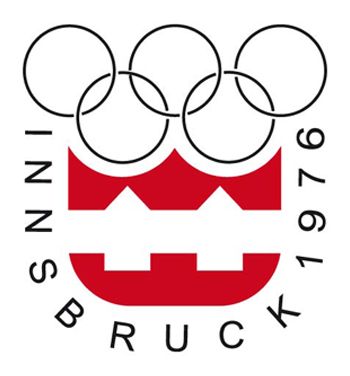
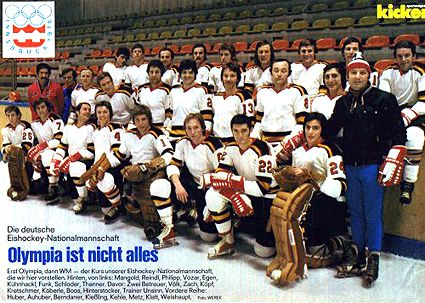

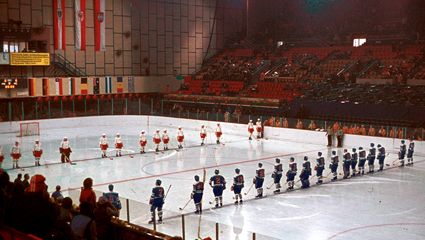
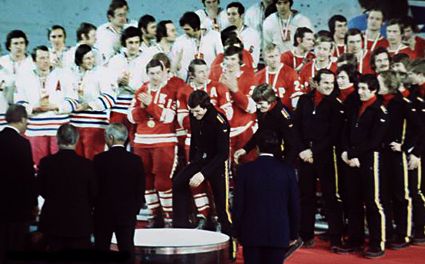
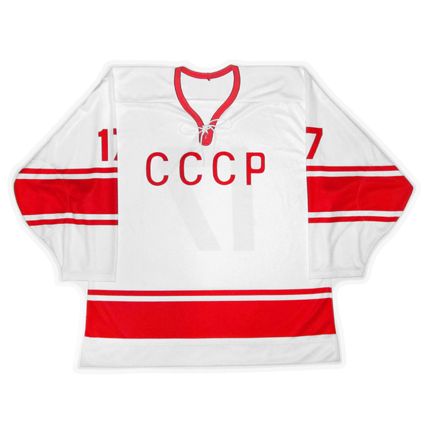

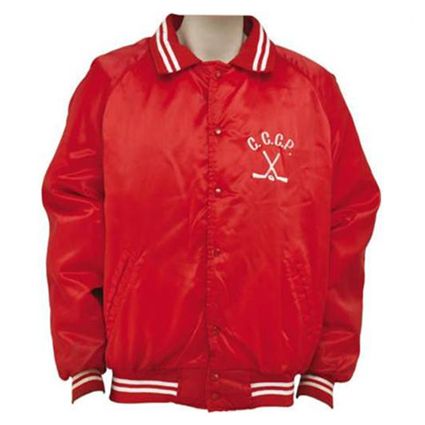
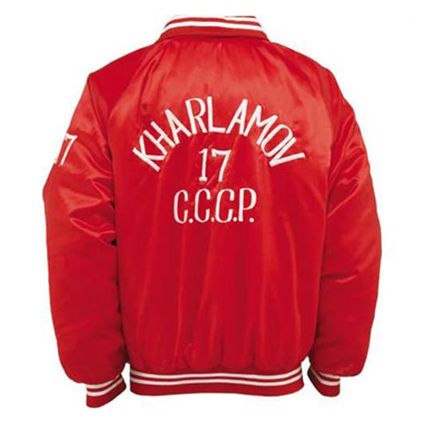










No comments:
Post a Comment
We welcome and encourage genuine comments and corrections from our readers. Please no spam. It will not be approved and never seen.